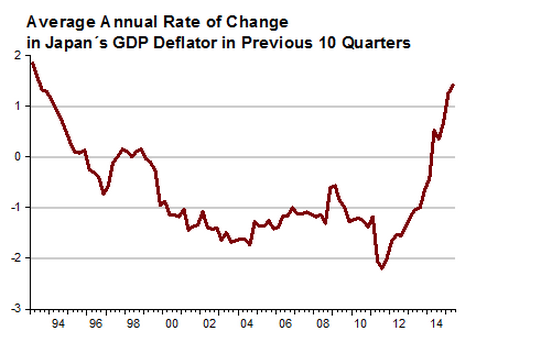Thinking out loud
Always dangerous to speculate when the market is changing minute by minute, but a few observations:
1. Over at Econlog I did a post earlier this morning, suggesting that the China slowdown is reducing the Wicksellian equilibrium global interest rate. Since central banks foolishly target interest rates rather than NGDP, this makes monetary policy more contractionary.
2. Why does this seem to affect foreign markets more than the US market? One possibility that that economies like Germany and Japan are more exposed to a global slowdown, as manufacturing exports are a bigger part of their economies. But that suggests the yen and euro should be falling against the dollar, whereas they are actually appreciating strongly. Indeed the appreciation is so strong that one could easily attribute much of the recent stock market decline in Europe and Japan to their strengthening currencies. Now of course I always say “never reason from a price change,” so let me emphasize that I am implicitly assuming the stronger yen and euro reflect tighter money, not surging growth expectations in Europe and Japan. I don’t think anyone in their right mind believes global growth prospects have been rapidly improving in the last week, especially when you look at commodity and stock prices.
3. The falling TIPS spreads and real interest rates suggest that AD expectations are falling in the US, but not anywhere near to recession levels. After all, did anyone expect a recession last time the S&P was at this level? Obviously not. The tighter money in Europe and Japan suggests those economies will be hit harder than the US.
4. If Europe and Japan are facing tighter money than the US, why would that be? Probably because markets think it would be easier for the Fed to at least partially offset this shock, via a delay in the interest rate increase. Areas already at the zero bound would have to be more creative, and history has shown that central banks tend to be slower to react at the zero bound, especially when there are sudden and unanticipated shocks like this. (It’s easier to offset anticipated shocks, like 2013’s fiscal austerity.)
This is all very speculative, and I don’t have a lot of confidence on my analysis. And as always, I don’t forecast asset prices, I merely try to ascertain what the market is forecasting. Unfortunately the Hypermind market is still not very efficient. It opened this morning at 3.6%, which was actually up slightly in the past few days. I don’t think that reflects actual NGDP expectations. Last I looked it was down to 3.4%, but of course efficient markets respond immediately to shocks. This tells me that while the market is a nice demonstration project, there is no substitute for a very deep and liquid NGDP prediction market subsidized by Uncle Sam. If it’s not the biggest $100 bill on the sidewalk, it’s right up there.
One other point. I’m much more concerned by falling TIPS spreads and falling 30-year bond yields, than I am by falling equity prices. Stocks often show large price breaks, without there being any change in the business cycle.
PS. I agree with Lars Christensen’s analysis (except the part about China not becoming the biggest economy. We face this problem because they already are the biggest.) I think Lars is right about the two key mistakes being the Chinese yuan/dollar peg and Yellen’s tight money policy.


